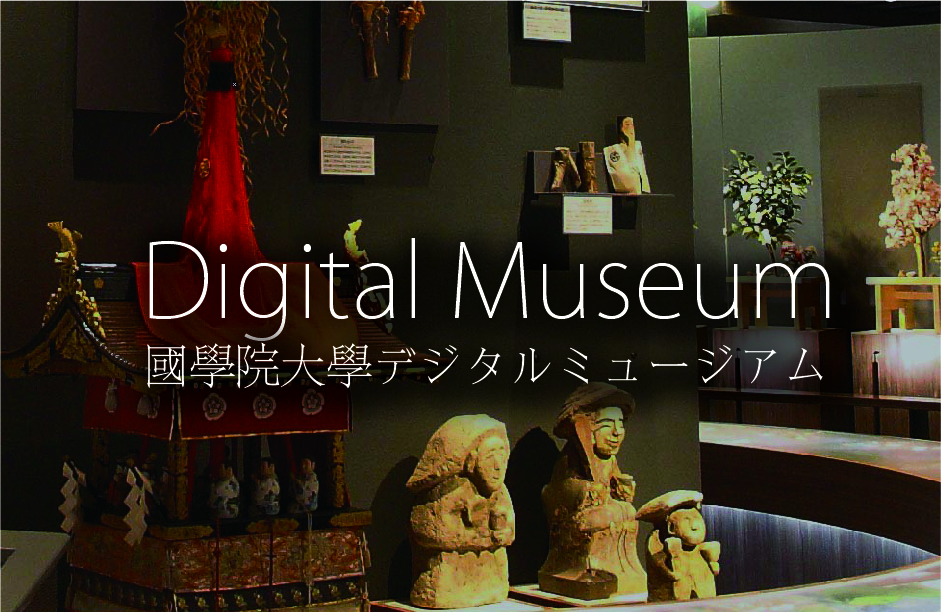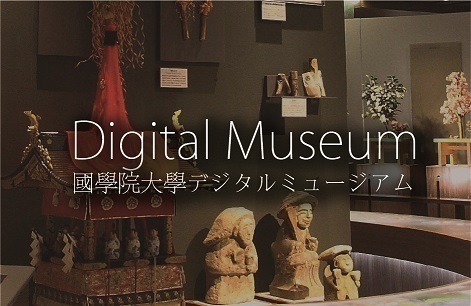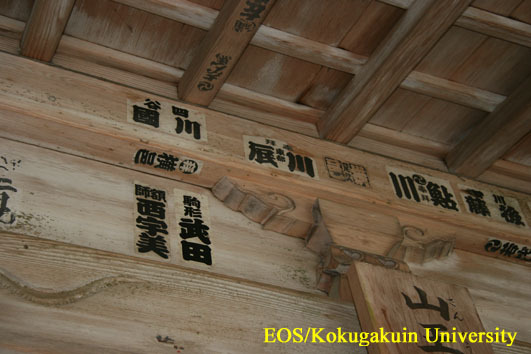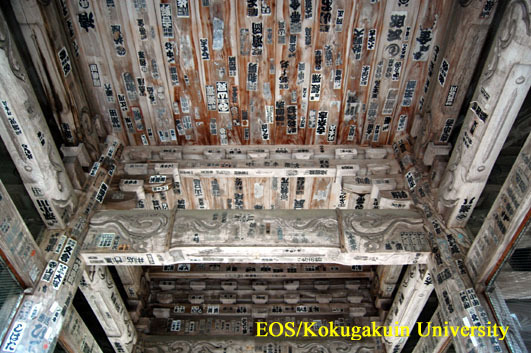- トップ
- Encyclopedia of Shinto
- Senjafuda
Encyclopedia of Shinto
| Main Menu: | |
| Links: |
詳細表示 (Complete Article)
| カテゴリー1: | 4. Jinja (Shrines) |
|---|---|
| カテゴリー2: | Offerings and Talismans |
| Title | Senjafuda |
| Text | Literally, "thousand-shrine-emblem." A small paper label printed with information such as one's name, the date, and place of birth that is affixed to the walls or pillars of temples and shrines by pilgrims. The custom of following a pilgrimage circuit to pay worship at numerous temples or shrines began in the Muromachi period, when pilgrimage circuits of sites sacred to the Bodhisattva Kannon became especially popular. Pilgrims would affix personal labels at each stop as they walked. In the mid-Edo period, the practice of visiting large numbers of temples and shrines (a practice literally called "thousand-shrine pilgrimage") to worship "faddish deities" (hayarigami) became popular, and this led to use of the term "thousand-shrine labels" (senjafuda). The labels themselves were originally written by hand, but later produced as woodblock prints, and evolved from monochrome to color, with increasingly new and unusual designs. Pilgrims would attach a label to a door, pillar, or ceiling of the temple or shrine, always striving to place it as high as possible as a matter of pride, sometimes attaching a brush to a long paper pole for this purpose. In time, senjafuda became more a popular novelty than an expression of religious faith, and they are now collected by hobbyists. — Iwai Hirosh |







